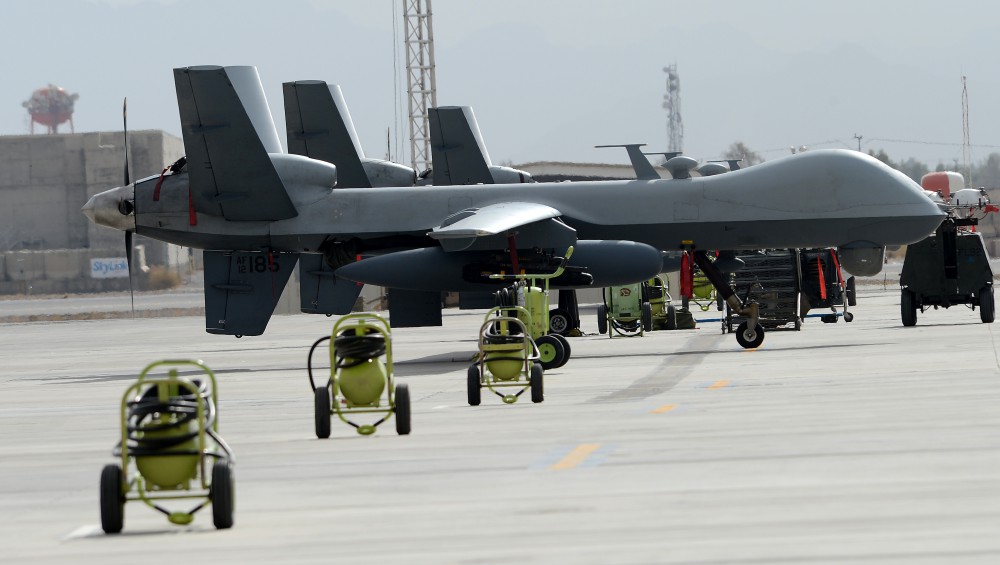The MQ-9 Reapers the Air Force recently shifted to Afghanistan from an undisclosed location where they were supporting Operation Inherent Resolve were flown to Kandahar Airfield, rather than boxed up and shipped, marking a first for US Central Command.
Maj. Gen. David Nahom, deputy commander of Air Forces Central Command and deputy Combined Force Air Component Commander, told Air Force Magazine that while MQ-9s have been flown from one location to another in other theaters, it had not been done previously in CENTCOM.
“Normally, we take the wings off, box them up, put them in a C-17, ship them over, put them back together. And that takes time,” Nahom said, noting that the aircraft have to be tested after reassembly. “Some very bright airmen said, ‘Hey, why don’t you just fly them there?”
Flying the Reapers took less than 10 percent of the time it would have taken to ship them via airlift, he said, meaning they were available for missions in both locations longer.The MQ-9s bring with them “some much-needed ISR capacity as well as their ability to strike,” giving commanders “a lot of options,” Nahom said.The Air Force also moved A-10s to Afghanistan that were originally slated to be based in Turkey to support OIR, Nahom said—and the choice of the A-10 was not random.
“Every asset we have has got an advantage and a disadvantage, that’s just the way they are. The B-52s … the versatility, the amount it can carry, and how long it can stay airborne. The F-15E, it’s the fact that it can do air-to-air and air-to-ground, as well as the F-16 and the Navy’s F-18s. And that’s kind of what I need in OIR right now, because there still is a threat from Syrian, Russian, and Iranian aircraft. Having an airplane that can do air-to-ground, and in the next moment do some air-to-air, just in case we need it, is very valuable,” Nahom said. “The A-10 and the B-52 are not those airplanes.”
However, he said, the A-10 “brings some unique capabilities to the Afghan war fight with some of the low-collateral weapons it carries,” as well as other advantages.“We like having it there,” he added.The planes, which are deployed from the 303rd Fighter Squadron at Whiteman AFB, Mo., flew their first combat mission within 24 hours of landing at Kandahar.Nahom said the Air Force moved the airplanes out of Turkey “thinking Syria may be kind of wrapping up by now,” but “somebody needs to tell ISIS,” since the fighting has not stopped.The realignment to Afghanistan does not mean the Air Force is increasing its presence in CENTCOM, Nahom pointed out. And though there has been a shift of some assets, he said, the US has not forgotten about OIR.“We still have a lot of firepower there. We still have the US Navy, a carrier, in the fight, the F-22s, the F-15Es, [and] we’ll bring back some F-16s again in the spring, so there’s quite a bit of firepower left behind,” Nahom said.
Source: Air Force Magazine

